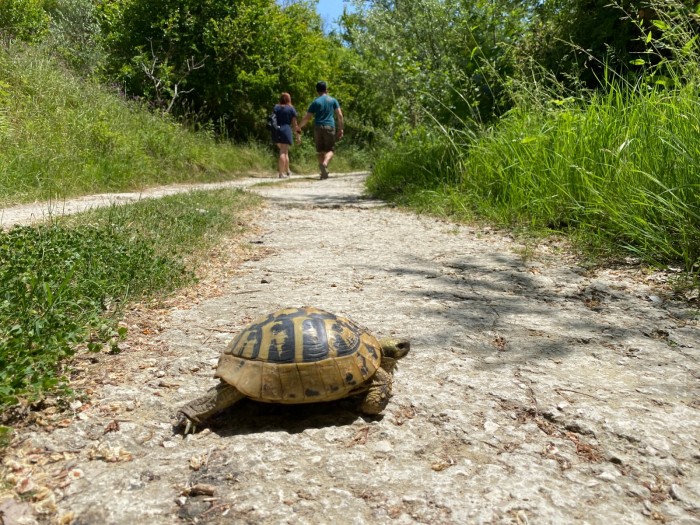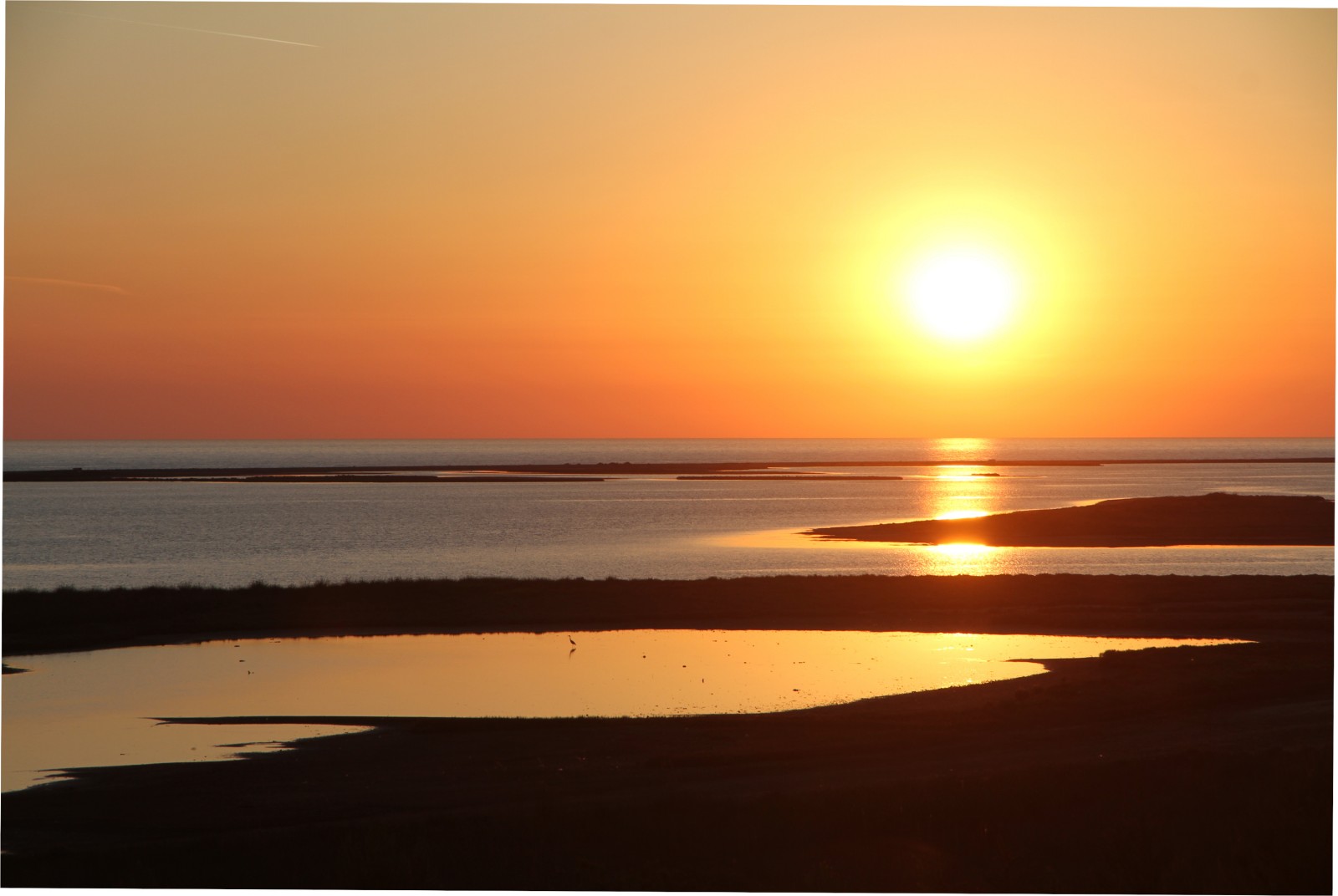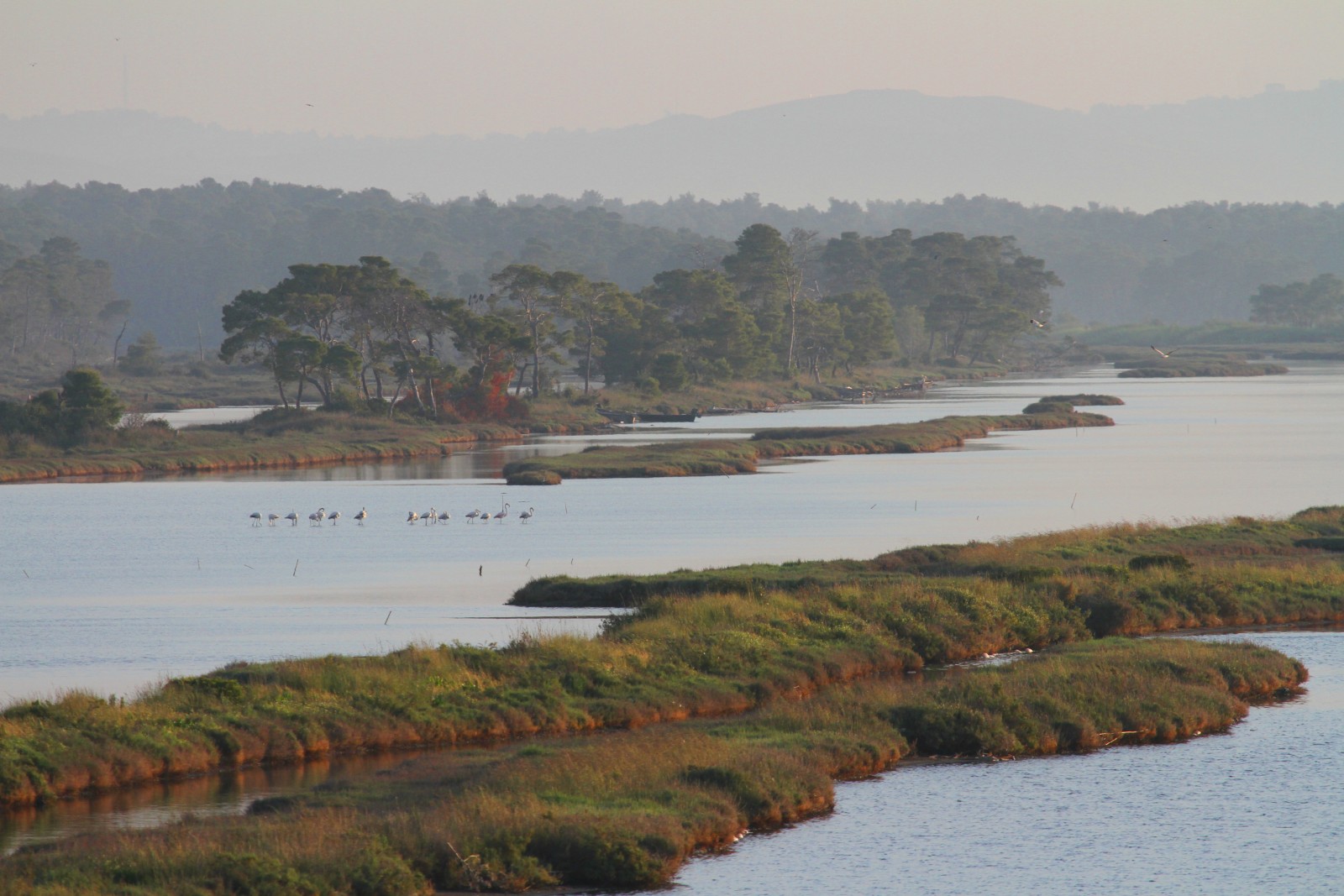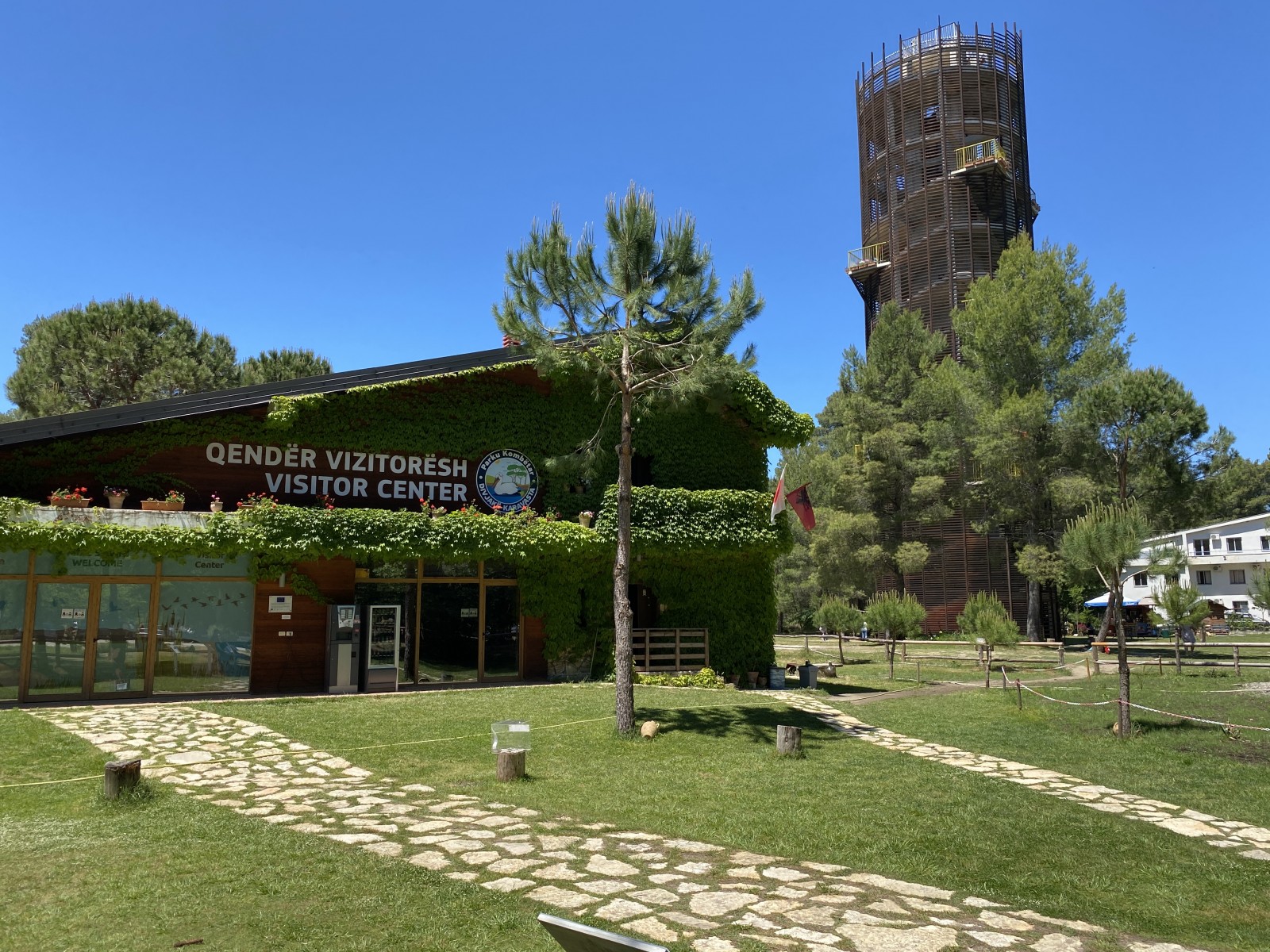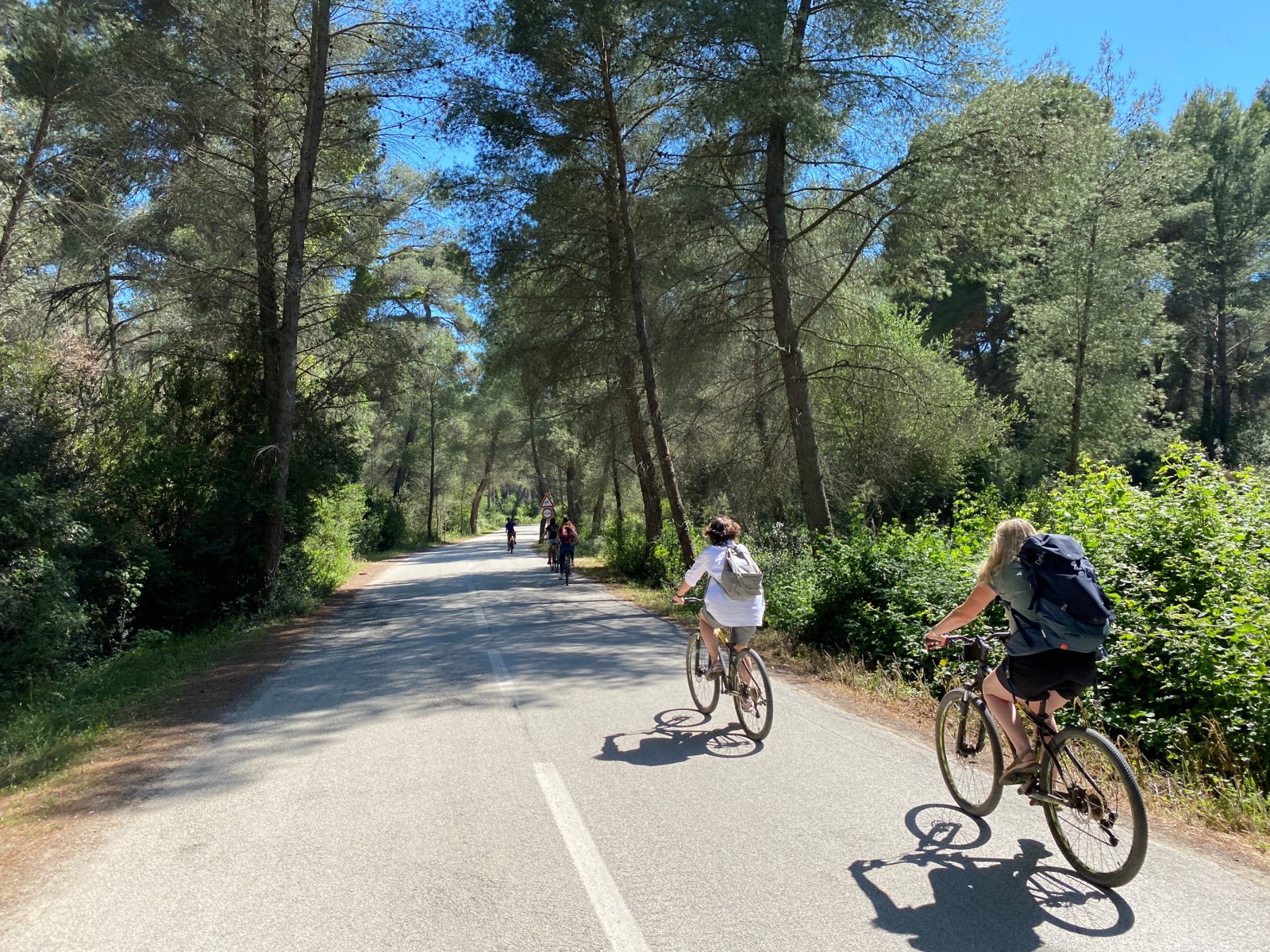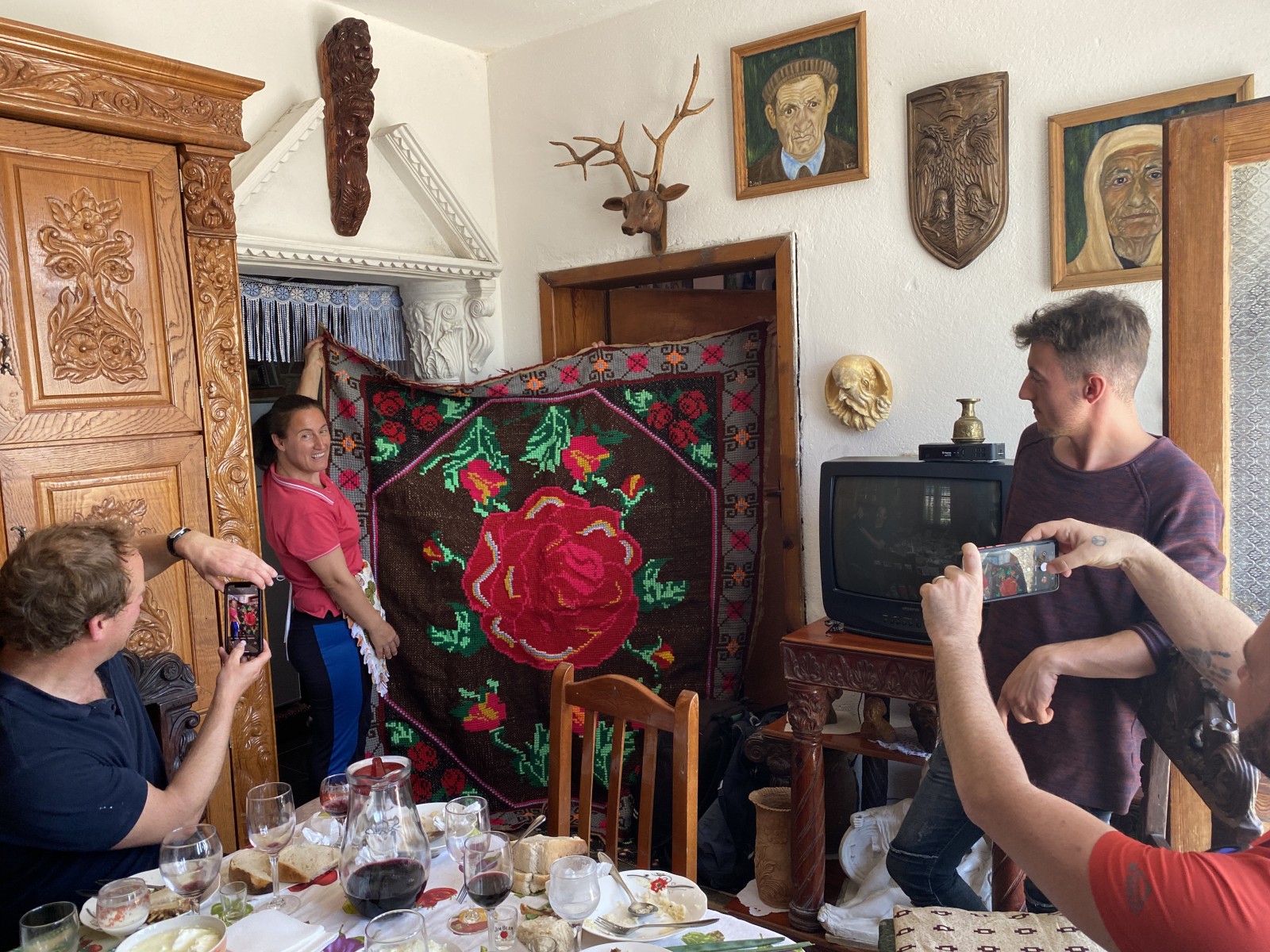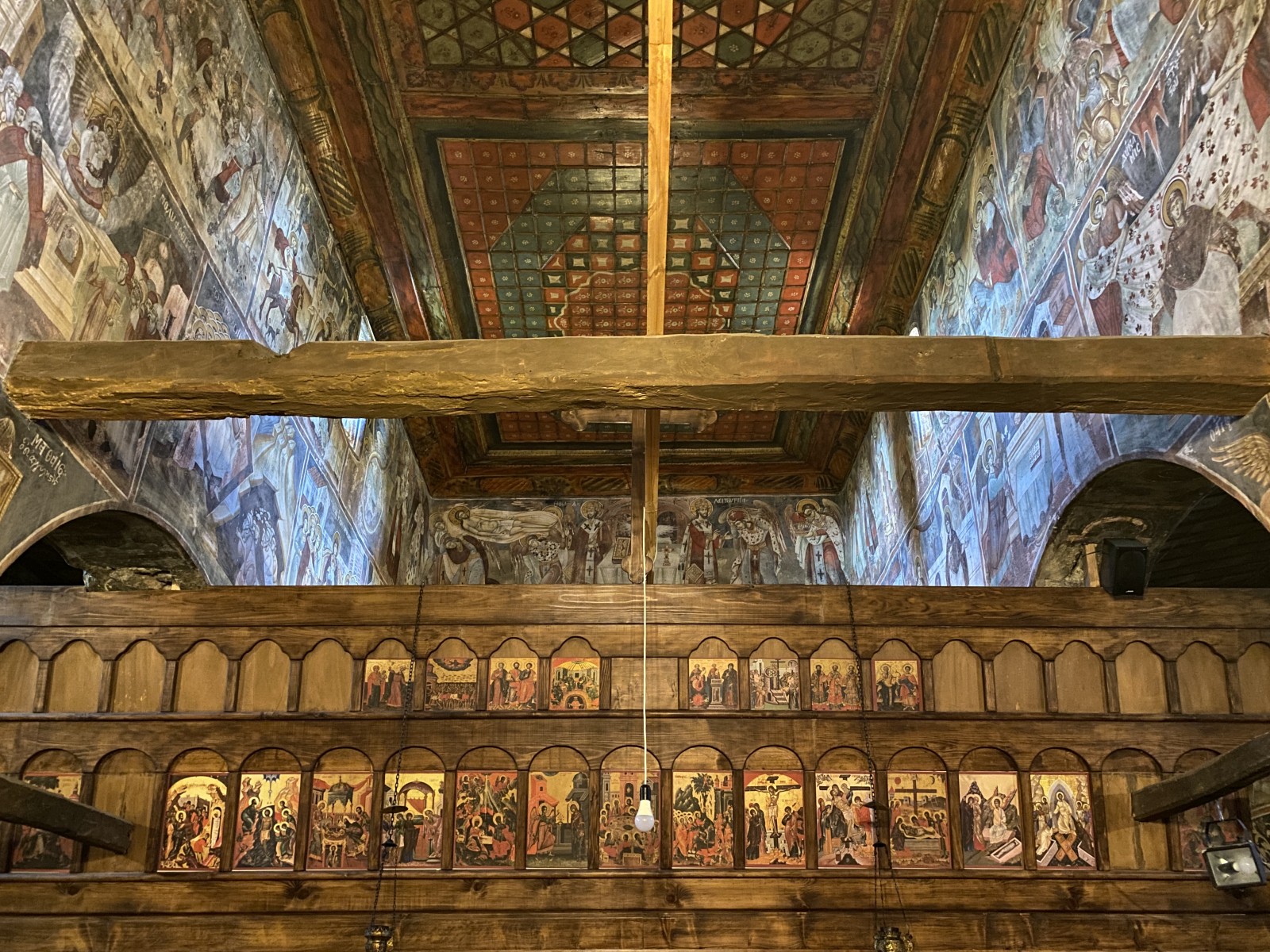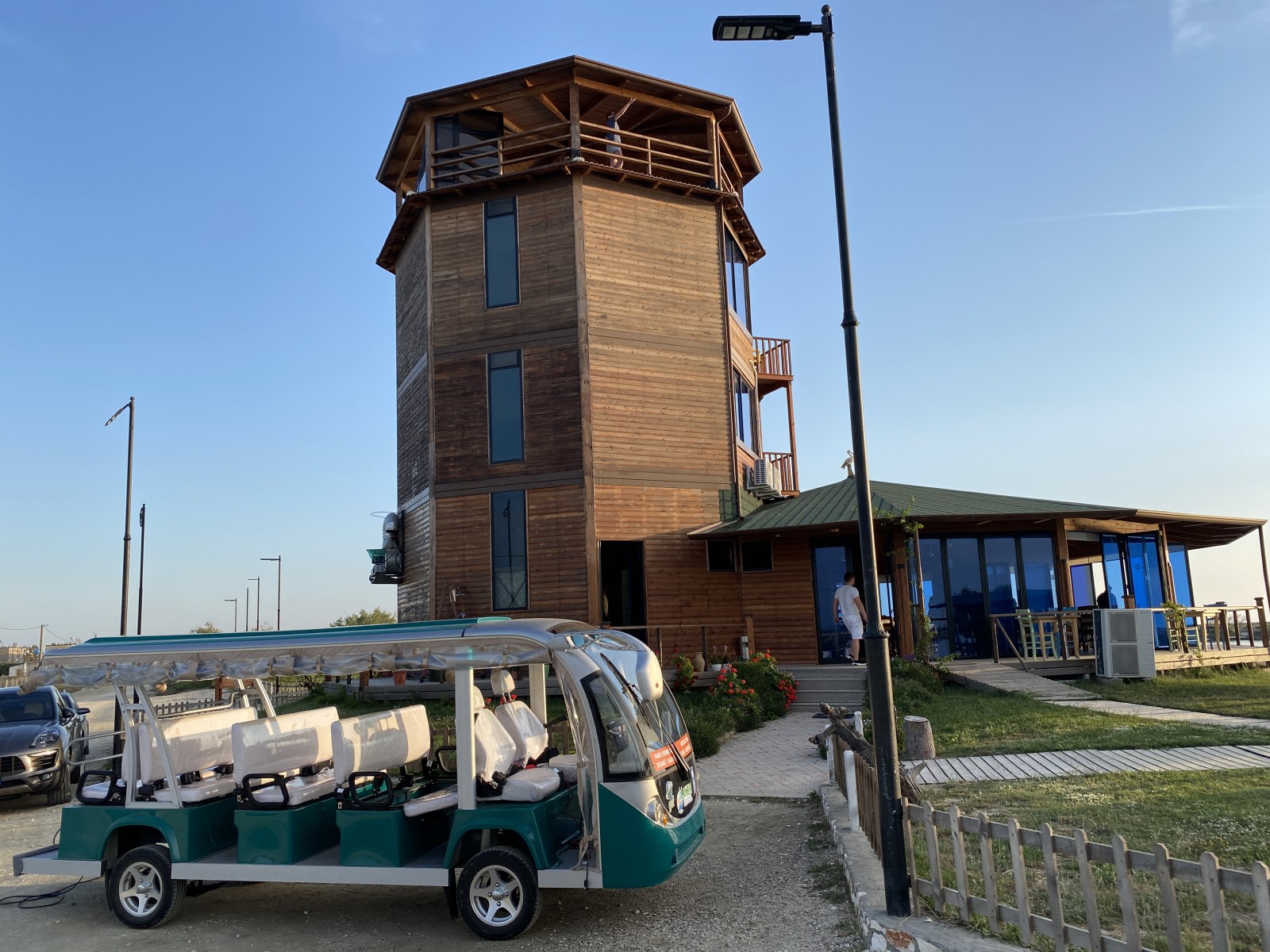
To read the original article in Italian, click here.
There are countries that in the collective imagination remain anchored to an image, an episode, a moment in their history. Albania, for many Italians of my generation, has remained that of the landings of 1991, particularly the one of the Vlora ship, which arrived in Bari overloaded with people, thousands of men and boys portrayed in a famous photo - they were crowded on the dock, on the ship, in the water, you could feel a sense of mute desperation and the desire to change their own lives. Then, unless one had the courage to personally cross the Otranto Channel, and touch the reality of our neighbors, Albania remained there, a concept somewhat faded in the head, for some people still tied to thoughts such as "if you go there on vacation you are a bit strange." "Sometimes Italians come here thinking we bite," more than one Albanian told me. Yet a lot of water has passed under the bridge.
The right time to update my imagery came thanks to a beautiful project and the people working on it, all overflowing with enthusiasm: I was invited to Albania to experience an ecotourism itinerary created by a local tour operator, Albanian Trip, as part of a European Union-funded project, DestiMED Plus. Ecotourism in Albania with a local company: words that together already sounded quite surprising before departure. In the words of a biologist friend, just to stick to stereotypes, "Really? You're going on ecotourism in Albania? That sounds really pioneering to me. Is this going to be serious?" Certifying the seriousness, as soon as we arrived in Tirana, was the task of Arnau Teixidor, a Catalan manager working for IUCN, a partner in the project, giving me all the details: "DestiMED Plus is a sustainable tourism project funded by the EU's Interreg Med program. We use a model designed by a network of Mediterranean protected areas, called MEET, to support nine of these areas to develop high-quality ecotourism experiences that benefit conservation and local communities. The project also aims to improve levels of integration between regional tourism and conservation policies in Mediterranean protected areas." Arnau also tells me that through a partnership with Global Footprint Network, they have developed a novel way to calculate (and reduce) the Ecological Footprint of each tourism package. Starting with protected areas to develop sustainable, responsible, community-conscious tourism: how can we not agree?
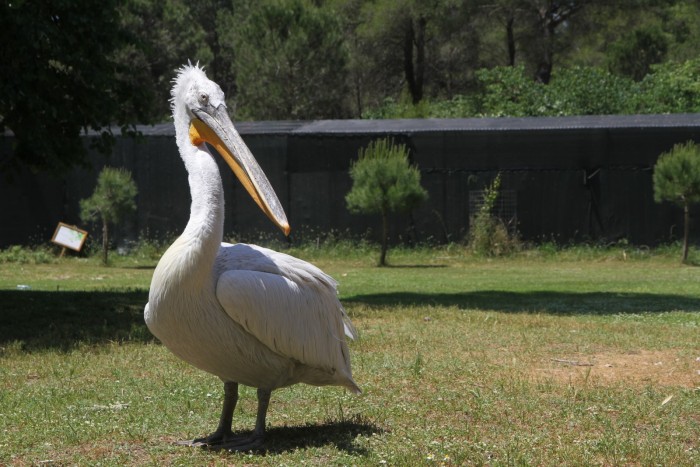
A PICNIC ON THE TOWER
Impatient to see how all this translates into reality, I set off from the capital along with a small group of tour operators and media from all over Europe. The initial stop is in the first Albanian protected area involved in the project: the Divjakë-Karavasta National Park, on the Adriatic coast and less than two hours' drive from Tirana. Elton Caushi, the founder of Albanian Trip who is organizing the trip and accompanying us, describes it as a hidden gem. The impact is definitely striking: the visitor center looks like that of an American park, all wooden, surrounded by well kept gardens, dominated by a very tall, modern observation tower. From the top, the view sweeps over a series of lagoons: some stand between the tower and the sea, another, much larger, is lost on the horizon to the mountains. Flying overhead are herons, gulls and a few large Dalmatian Pelicans, a silhouette that almost looks like that of a glider, as its wingspan exceeds 2.5 meters. It would be beautiful as it is, but Elton has come up with a little "coup de théâtre" for the tourists he brings up here: at the top of the tower, he spreads a colorful carpet and lays on it a fragrant lakror, a kind of warm pastry filled with wild herbs. "I went to get it nearby, from a lady who makes it the old-fashioned way," he explains in perfect Italian. "And to drink, you have to try dhalle!" Fermented milk with added salt is another Albanian delicacy, though a little less easy on our palate. The picnic at the top of the tower takes place with metal cutlery and water bottles filled from a water jar: sustainability pass through these small details, too.
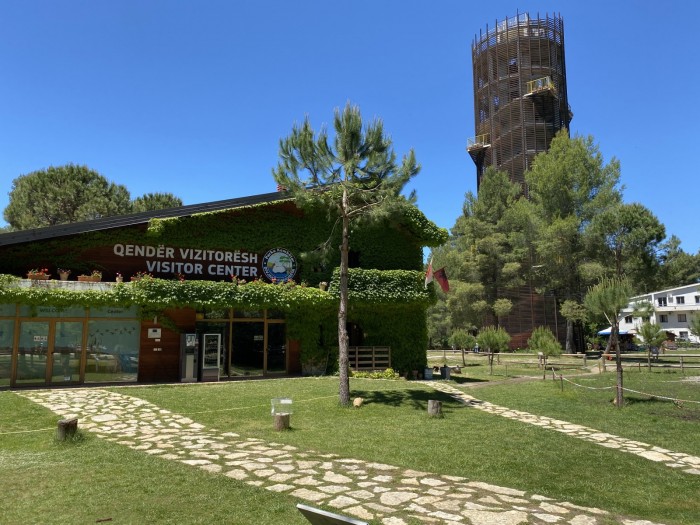


In the park - created in 1966 and then expanded in 2007 - Elton organizes bike rides through the pine forests and Mediterranean scrub; walks on the beach and across other landscapes to admire small churches covered with frescoes; and then, boat trips to observe from afar, in the middle of the largest lagoon, the colony of Dalmatian Pelicans, the only one in Albania and an important site for the preservation of the species, which is endangered throughout its habitat range. It is a beautiful, deeply Mediterranean place. We don't see any foreign tourists around, perhaps because it's spring, but we're betting that not many come in August either. Accompanying us on our exploration is the Park Director Ardian Koçi, who recounts with a mixed feeling of passion and disillusionment his work and the difficulties of managing a natural area in Albania: "I have a team that works hard and well, but salaries are really small and it's hard to come to the end of the month.... The regulations also prohibit us from financing ourselves with souvenirs or entrance fees... good thing that, at least, we can count on help from international cooperation."
The conversation takes place in Italian, again - I soon learn that everyone, or almost everyone, speaks Italian in Albania. "I was a merchant in Bassano del Grappa, Veneto, I was there for 20 years," confides Ardian. "At one point I was offered to become director of this park: I was already planning to go back to Albania to do something for my country, it seemed like the right opportunity." Ardian's daughter, 9, arrives: she doesn't speak any Italian, but English, almost perfect English, certainly better than mine. Did you learn it in school? "No, on Youtube, music and cartoons." Different times, different generations.
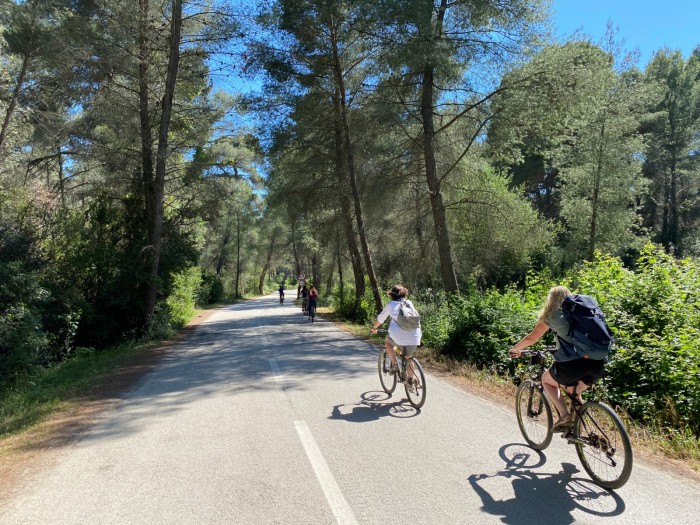
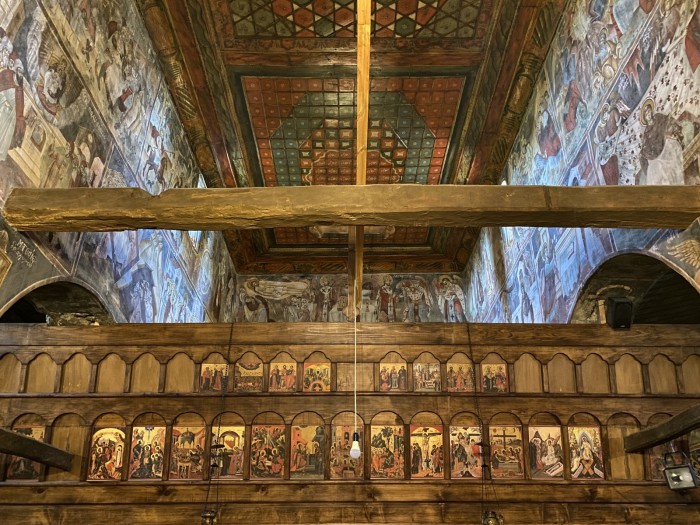

THE MORE-THAN-ZERO KM
Little by little, I understand how much Elton and the DestiMED Plus' concept of "sustainable tourism" is centered on people. Not only in the sense of benefiting the community by contributing economically with one's passage; but precisely in the sense of spending time together with those people, conversing, sharing moments, entering for a moment into their lives. On the second day we enter the home of Tiku, an artist who lives in the small village of Babunje. Artist is a reductive qualification, really: Tiku - born Adriatik Rrasa - is one of those eclectic minds who can work with any material, from iron to clay, from hemp to stone. His garden is an incredible, chaotic manifestation of his versatility: everywhere there are sculptures, vases, tools, objects of indecipherable use, monumental capitals. Tiku gives practical demonstrations on everything, puts us through our paces with his tools, never stops talking, then invites us to lunch with his family: a large table where his wife and children relentlessly bring traditional peasant dishes and then sing a polyphonic song for all to follow along, and then we go on to "coffee grounds" reading, and everything is so genuine and fun that it feels like we have been catapulted into another dimension, where there are no barriers between people and cultures. Tiku's son is called Euro - a name that is a hope, for Albania as a whole. We are only a few miles from Italy, and yet in some ways so far away.


In the evening, we arrive in a small village that has an emblematic name, the same as Tiku: Adriatik. We are in the southern part of the park, "a depressed area" in the words of the director "where there is still no tourist infrastructure, unlike the coast near Divjakë." Not far from the last of the scraggly houses are flooded meadows, reed beds as far as the eye can see and, isolated, a large watchtower that stands out in front of a wide canal. The view from the top is once again spectacular; I would spend hours gazing at the horizon, as flocks of birds ply the vermilion sunset sky. "This is my dream," whispers Kujtim Hoti. "I am imprisoned here. I can't get enough of the beauty of this place." Kujtim's story is another story of passion: that of a man for a place that is still virgin, obtained in concession from the state 15 years ago ("my job is to keep the canal clean") and then became home to a small business, thanks in part to the support of the director. "Ardian told me they wanted to build an observation tower. I asked to do it myself, putting up the money, as long as I could open a restaurant on the ground floor and make two rooms on the middle floors of the tower. I don't bother anyone here, but so many people opposed me, starting with the mayor of the village, and I would never have been able to do anything if it were not for Ardian. Eventually, in 2020, Skela e Pirgut was born, meaning "the port of Pirgut," named after an ancient city that once existed here."
Kujtim offers only fresh fish, more than zero kilometer, cooked by three local women - I don't think I've had such a delicate and excellent seafood dinner in recent years. Looking ahead, another dream: to make a few more rooms near the tower. "Everything with natural materials and with the utmost respect for nature, which is the priority. As long as they don't get in my way. And that young people do not keep leaving Albania, attracted by foreign countries, otherwise only old people will remain here."

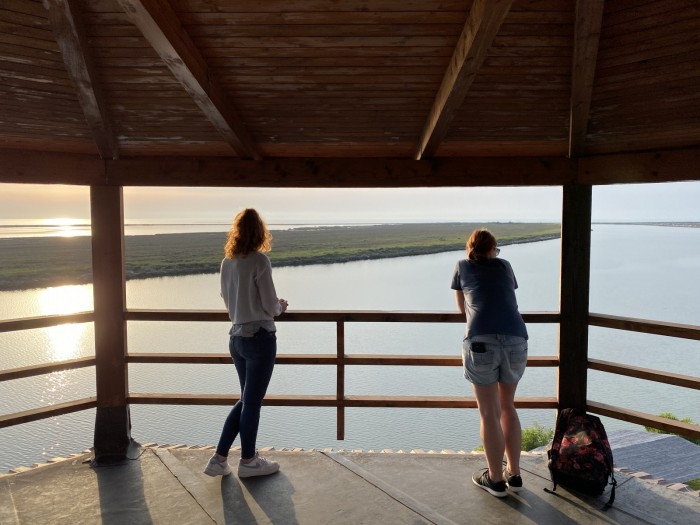
PRISTINE NATURE
Guess where Kujtim learned to appreciate seafood? In Italy, in Forte dei Marmi, where he ran a restaurant for six years in the 1990s. It seems like everyone here has a relationship with Italy. When you say you are Italian they either smile at you or offer you a glass of raki. They speak Italian, they know everything about Italy. And it is always impressive to think how much the opposite doesn't happen. Italy, moreover, can be seen, at the end of the sea. The second area involved in the DESTIMed Plus project is the Karaburun-Sazan Marine National Park, an hour from Karavasta along the coast and just south of Vlora (Vlora in Albanian): it protects the point in Albania closest to Apulia, a large, craggy rocky promontory that has always been of strategic importance to anyone who has passed through here - Germans, Italians, Greeks, Albanians. "Because of its location guarding the Strait of Otranto, the cape has long been a military zone," explains the young park director. "And that is why it has remained almost virgin: perhaps the most virgin place in Albania, an ideal laboratory for sustainable development. We hope we know how to preserve it, how to prevent mass tourism."
We skirt the cape by boat: the waters are crystal clear, the landscape rugged and desolate, with bristling shrubs sloping down to the sea and the island of Sazan looking at us not far away. There are bunkers everywhere, storage sheds, barred caves, concrete domes poking out from behind the rocks. "And you can't imagine how many wrecks are underneath us," explains the captain. "Thirty or so have been counted, some of them still unnamed. We know the story of many, though: like that of the Regina Margherita, the Italian battleship that sank on the night of December 11th, 1916 after hitting two mines. It was a huge disaster: 675 people died." The captain slows down. The monk seal spotted several times in the park doesn't show up, but the spectacle of the Haxhi Ali cave, which suddenly opens in the limestone, repays all expectations: a cavern from a Homeric tale, some 20 meters high, hundreds of swifts darting overhead, the water so clear you can see your reflection in it.
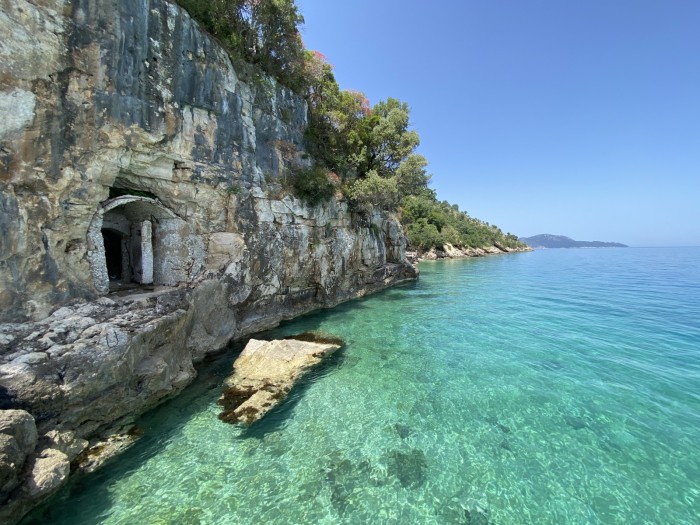
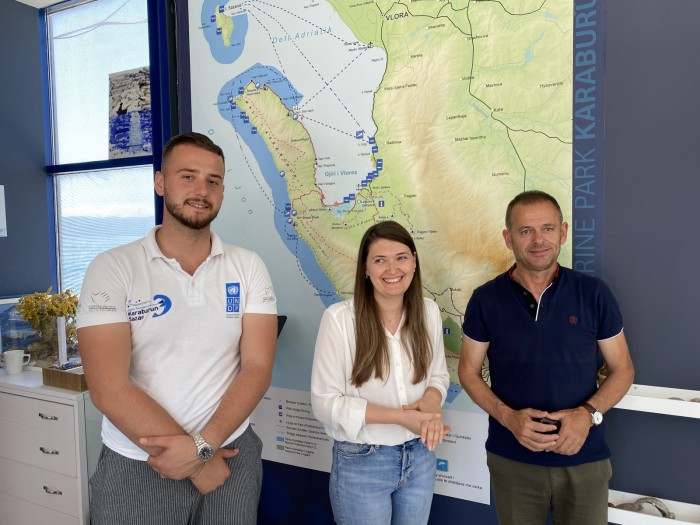
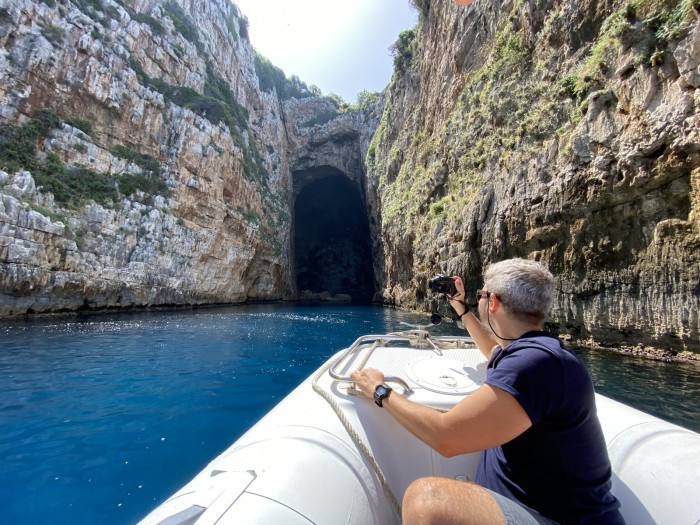
Sofo speaks Italian too. He tells us of another boat, the one that brought him to Calabria, in 1991, and then of the struggle to get residency, the inability to get a residence permit, the sad return to his homeland. He recounts it with his blue eye gleaming, the fatigue of the day setting in. Sofo is a shepherd in Tragjas, in the mountains opposite the head of Karaburun. We walk to his house, winding our way through oaks and gorse, and watching hundreds of goats as they returned from their pastures, their milking, and the preparation of dinner with burek baked on the stove and freshly made cottage cheese by the hands of Dhurata, his wife. At Sofo's house we look like children rediscovering the most basic things: how cheese is made, how bread is baked, what freshly picked field grasses smell like. It is another experience that without Elton, his network of contacts and his concept of "sustainable tourism" we could never have invented. It is an experience to touch what it means to be Albanian, in toil and pride: life as a shepherd is grueling, two out of three children are elsewhere, but Dhurata and Sofo are about to open two rooms to welcome tourists. They dream, as everyone does. They dream of something different, of something better. Maybe thanks in part to Elton's help and projects like DestiMED Plus.
Sofo's double flute sings a melancholy melody in the evening darkness. Jackals howl, only fireflies light up the farmyard. Far away, a few fireworks. The lights of the coast. The same ones that Albania, in spite of everything, sees at the end of the sea.
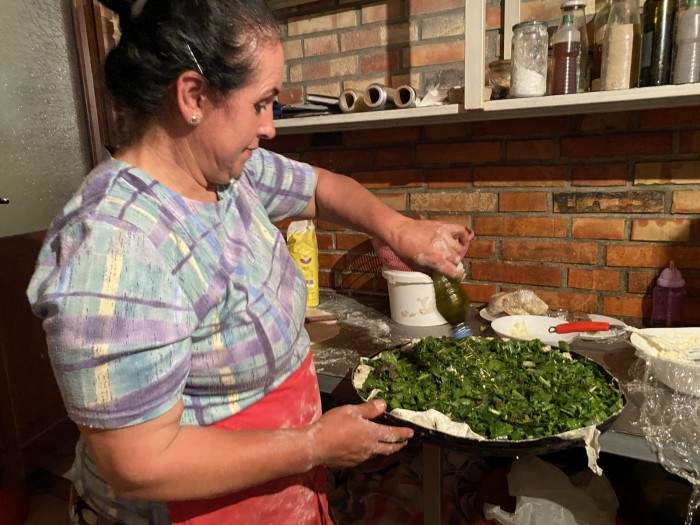


INFORMATIONS
- Find out more about the DestiMED Plus project: website.
- Find out more about the protected areas of the MEET network: website; Facebook; Instagram.
- The tour and the individual ecotourism experiences described in the article can be booked with the tour operator Albanian Trip: website; Facebook; Instagram. Elton Caushi is the ideal person to answer every request on a trip to Albania and can organize tours of any duration and on any theme (such as history, nature, gastronomy, general culture).
- Some useful addresses for a trip to the areas described (although we highly recommend contacting Albanian Trip to organize activities and meet people). The visitor center of the Divjakë-Karavasta National Park is located just beyond the village of Divjakë: follow the signs for the coast (on Google Maps the tower is marked "Kulla 360 °"); here you can organize boat or bike trips with the park rangers. A trail map is also available. Continuing along the road, there are several fish restaurants and some hotels, from which you can easily access the coastal lagoons and the beach; Divjaka Resort (larger and older) and Pelikan (smaller and more modern) are recommended. In the southern part of the park, accessible only by circumnavigating the lagoon to the east, do not miss the Kisha and Shën Athanasit church in Karavasta and the Skela i Pirgut tower / restaurant / hotel in Adriatik. The small visitor center of the Karaburun-Sazan National Park is along the coastal road, just south of the Picasso hotel (recommended), next to the restaurant of the Qendra and Peshkimit fishermen's cooperative. You can ask on the spot to organize boat trips in the park.
